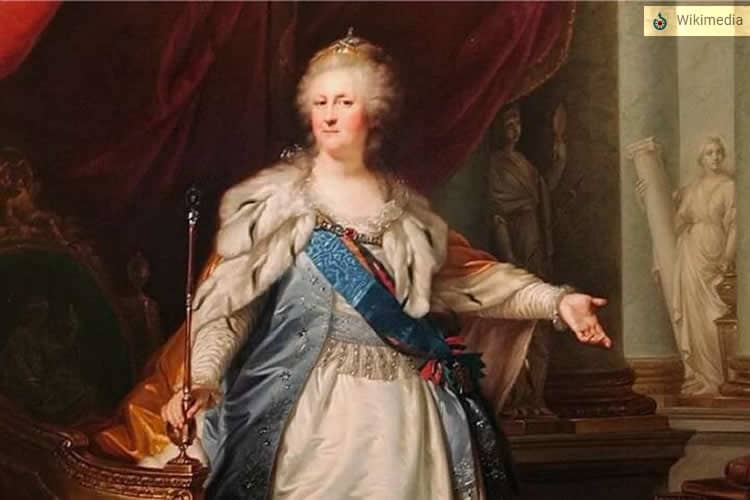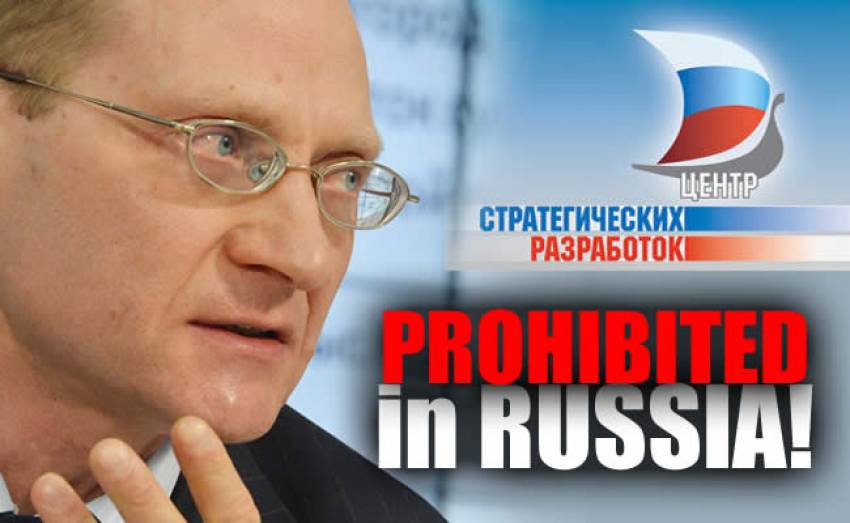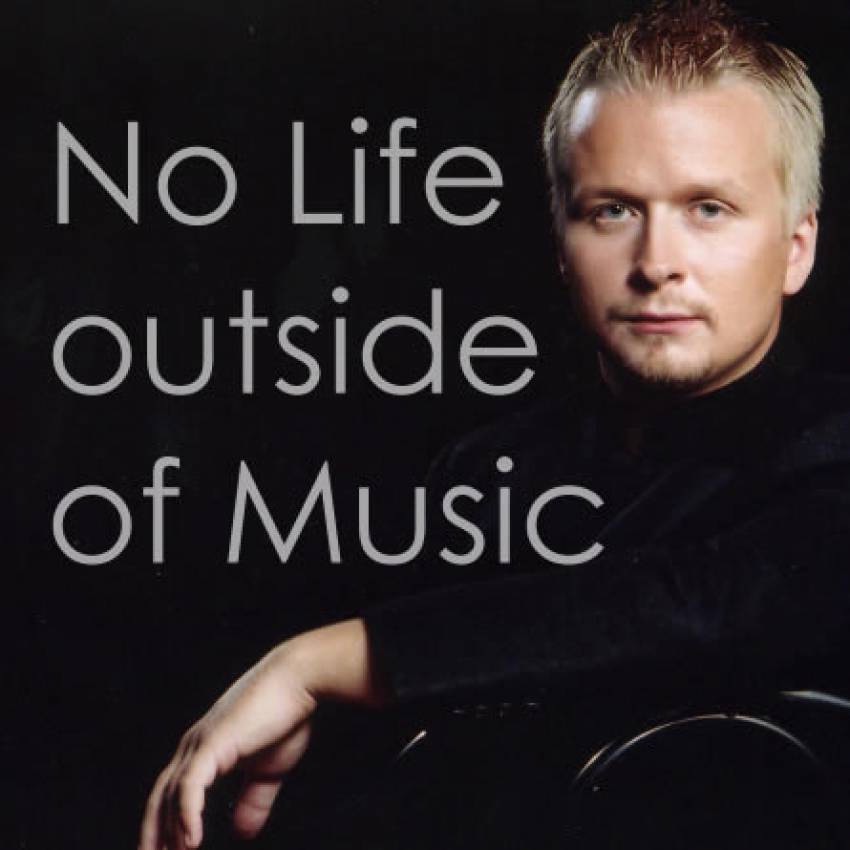PART I
The historical inferiority complex has been taking root in the minds of people around the world for three hundred years. We are talking about the official history of Russia, in which little corresponds to reality, but the Russian government preaches it all over the world and continues to distort it.
First of all, it should be mentioned that a lot of historians, those whom Russia did not recognize, have compiled and continue to compile works on real history. These are representatives of Russian literature of the past, among the few stands out Alexander Pushkin; these are researchers of the history of the Soviet period and modern authors: FOMENKO Anatoly Timofeevich, born in 1945, is an academician of the Russian Academy of Sciences (RAN), Nosovsky Gleb Vladimirovich, born in 1958, is a candidate of physics-mathematical sciences (MSU, 1988). To these names we can add Nikolai Nikulin, an art critic of the State Hermitage, a veteran of the Second World War, who wrote a truthful book of his memoirs about the terrible role of the Soviet Union in this war; Mark Solonin forced to leave Russia because of his works and books revealing the truth about the Second World War because of his criticism of Russia, which started a war against Ukraine. Outside of Russia, there are a sufficient number of scientists interested in cleansing Russian history of the politically advantageous scale who work in this area. There are many inquisitive minds who have unearthed the true history of Russia and continue their search today.
The main driver of the “official works” of Russian history, who falsified with the promise to continue this technology into the future, was Empress Catherine II. The daughter of Prince Anhalt-Zerbst, Catherine ascended the throne as a result of a palace coup against her husband, Peter III, who soon died under unclear circumstances, although methods of maintaining power in the history of mankind indicate that he was killed by supporters of the new empress.
Catherine II ordered the compilation of a history of the Russian state based on archives that came into the possession of the Russian Empire as a result of the colonial wars, started by the Kingdom of Moscow, and then by Peter I, who created Russia. As you know, Catherine was in friendly correspondence with the French writer Voltaire (born François Marie Arouet) and asked the great Frenchman to write his history of Russia, which he did, but it seemed too “unprofitable” to the Russian empress and was immediately banned.
Admiration for Catherine, however, fit into Voltaire’s general pro-Russian concept. He was the main disseminator of the myth of Peter I in Europe: the philosopher wrote two volumes of “History of the Russian Empire in the Reign of Peter the Great,” in which Peter is presented as Europe's envoy to the wilderness. As stated in the book, Peter “wanted to introduce into his domains not Turkish, not Persian, but our customs.” Voltaire's work on the first Russian emperor was declared unscientific and flattering by his contemporaries, but the author did not think of backing down. Having become a hostage to the self-created myth of an enlightened and fair Russian monarch, Voltaire automatically extended this myth to Catherine II.
The falsification of Russian history on a full scale was initiated by Catherine II at the end of the 18th century. For modern Russia, this period of history was the main geopolitical redistribution of Eurasia, and the explanations will be given below.
The Empress personally edited the “History of Russia” she compiled, editing historical documents and giving orders for the destruction of original documents and then forging the writings. The need for global falsification of history at this particular time was determined by the seizure of the Grand Duchy of Lithuania, Rus' (Ukraine) during the divisions of the Polish-Lithuanian Commonwealth. Among the political objectives were:
- to somehow justify the acquisition of these territories that are completely foreign to Russia.
- to suppress the national liberation struggle of Belarusians and Ukrainians by inventing a myth that they allegedly always dreamed of being under Russian rule.
- within the framework of this myth, another myth should have been created: that the Muscovites are Slavs and Russia is Rus'.
- to cover up the implementation of these tasks, it was necessary to conduct a massive revision of all chronicles and historical documents in the occupied territories with the aim of correcting them and further destroying them.
To achieve these political goals, it was necessary to solve specific problems of falsifying history:
- create a myth that Kievan Rus, with the arrival of the Tatars, suddenly begins to be considered Russia (and even the Center of Rus'!) but the country of Moksel (Moksha) located in the Horde and 1000 kilometers east from Kyiv (Rus'), inhabited by Finnish tribes and before was not considered Russia by anyone.
- create a myth about the existence of “Suzdal Rus'”, although no one knew about its existence before Catherine II.
- create a myth that Moscow was founded with the participation of the Kyiv princes, although before Catherine II all historians unanimously believed that it was founded at the behest of the Horde Khan after 1257 (then the Tatar-Mongol Empire carried out a census of all settlements and the entire population of the region to tighten taxation, and Moscow was not yet there).
- create a myth that Muscovy is Rus' and Muscovites are Slavs.
- create a myth about some kind of “yoke of the Horde,” although before this all historians believed that Muscovy was a reliable stronghold of the Horde in the fight against Russia for three centuries, and then, under Ivan the Terrible, seized power in the Horde.
- create a myth that Dmitry Donskoy fought not for the Horde, but against the Horde.
And so on. All key moments in the history of Muscovy were subject to rewriting.
It was Catherine II, a European-educated person, who arrived in the Russian Empire, seized power in it, and gained access to archival primary sources. She was horrified when she noticed that the entire history of the state rests on verbal epic mythology and has no evidentiary logic. The history of the state was based on the false research of Ivan the Terrible and was in the chaos of a lack of evidence and mutually exclusive contradictions. Was it possible to seriously consider the assertion of the Moscow Rurikovich that Kievan Rus belonged to Muscovy on the grounds that the Moscow prince came from the Kievan Rurikovich dynasty? And then the Empress zealously set to work. One should not think that Catherine II, out of simple selflessness, began to “write and organize'' Russian history. Everything was done with the greatest intention. In the long line of Moscow, and later Russian, Princes, Tsars and Emperors, Catherine II herself was to take one of the most honorable places. The more majestic and noble that row turned out to be, the more majestic she looked in it—the German princess. She did not allow even a thought that in the royal family she could end up among the TATAR-MONGOLIAN ordinary nobility. It would be a nightmare for her. For a European educated person of that time, this could not have been allowed even in a dream. On December 4, 1783, Catherine II, by her Decree, ordered the creation of a “Commission for compiling notes on ancient history, mainly of Russia” under the command and supervision of Count A.P. Shuvalov." (V.O. Klyuchevsky "Historical Portraits", p. 564.) The decree was carried out in practice. About 10 people compiled useful notes on ancient history, mainly relating to "Russia", making short extracts from the "ancient Russian" chronicles and foreign writers according to a rather peculiar plan known to Catherine II. Shuvalov selects these scientists, preferring “diligence and accuracy over wit” in the selection, and presents them to the Empress “in charge” of the “composition of Russian history”. At the behest of Catherine II, Gerard Friedrich Miller was appointed to be the head of the so-called “Miller’s historical department”. This department kept working even after his death in 1783. It was Miller who had a decisive influence on “the writing of Russian history.” Previously, he looked for “historical materials” in the Volga region and in Siberia. He seized materials relating to the Tatar-Mongol past of Muscovy (1238-1598). In 1792, “Catherine’s History” was published. Since then, it has been strictly forbidden to introduce anything else into the narrative framework of the history of the Russian Empire. Member of the Commission Alexander Vasilyevich Khrapovitsky (1749-1801), in 1782-1793 State Secretary of Empress Catherine II, in his memoirs (which went through repeated royal and church censorship and were published in 1862, republished in 1990 in Moscow), openly writes, that Catherine II personally ruled a new "version of history", including the compilation of the genealogy of the "Russian Grand Dukes". At the same time, she argued that it is necessary to follow not historical facts (supposedly “confusing”), but “the order we need" and “Russian needs.” The phrases of Catherine II quoted in Khrapovitsky’s memoirs are interesting. He recorded her direct instructions to show the enormous power of the Tatars and the reason for their victories in the absence of strong monarchical power (Catherine ordered at least 70 specific principalities to be brought to show the “fragmentation of Russia”). Including in the notes “about the Tatars and their strength during the invasion of Russia”, the empress already replaces the Suzdal land with the concept “Russia”. The Empress especially instructs Khrapovitsky to create a myth that the Russians are supposedly Slavs, for which he “found papers that, while living in the Hermitage, were written about the antiquity of the Slavs, with research into the primitive people.” Such typical moments in the memoirs are funny: “I showed the Sit River, in the Yaroslavl province. It flows into the Mologa, and the Mologa into the Volga. In the City, Prince Vladimir Yurievich Ryazansky was killed by the Tatars. [Catherine II] thought that he crossed the Volga much lower to attack the Tatars, but the Sit River shows that Vladimir fled to Tver. The history being written is not very happy with this discovery.” This is how the prince’s flight from the Tatars turns into an “attack against the Tatars,” because “they are not very happy with this discovery.” And from such thousands of small (and often large) falsifications, a completely different, fictitious story is created. It is significant that Khrapovitsky says about it in this quotation: “for the history being composed” which is absolutely true, since this history of Russia was precisely COMPOSED by the Commission under the supervision of the empress.
Being well-educated and comprehensively developed at that time, Catherine II understood that the history of her Empire did not fit together. Reading the ancient chronicles of Kievan Rus, she saw what immediately caught the European’s eye: the unproven and arrogant transfer of the right of heritage from the Grand Duchy of Kyiv to the “Moksel” or Suzdal land, and subsequently the arbitrary transfer of this “right” to Muscovy. For a European educated person, this is nonsense! At one time, England also laid claim to France. However, by the end of the 18th century, the English encroachment on the French throne had turned into either a European joke or a farce. And Catherine II knew about this. She understood that if such a gap caught her eye, then later serious European researchers would simply reject the unfounded assertions of the Muscovites about their “hereditary right” to the history and land of Kievan Rus. Indeed, on part of the land of Kievan Rus, even during the time of Catherine II, lived the same people of Rusyn-Ukrainians, still not subject to the Russian Empire, who were completely different from the Muscovites. It was precisely that period in the history of the “Great Russians” (the second half of the 12th-13th centuries) that was subject to radical “strengthening”. The history of the subsequent period required “the usual revision.” The Empress acted very cunningly and cleverly. She did not touch the history of Kievan Rus, which was dangerous. The history of Kievan Rus by that time was recorded not only in the chronicles stored in the archives of Catherine II but also in the chronicles: Lithuanian, Polish, Swedish, Hungarian, Greek, Turkic, Arab, etc. The “Zaleshan” principalities, that is, the future Muscovy, were initially created out of connection with European culture and out of contact with peoples who, by the end of the 12th and in the first half of the 13th century, could record its concretized history.
The Russian Empire did everything possible to either destroy the peoples of the Volga region and Siberia or russify them and force them into Christianity. And Volga Bulgaria was burned; its madrassas and mosques were destroyed to the ground, all cultural values and chronicles were stolen and taken to Muscovy. That is, everything that we know today about the origin of the Suzdal principalities and Muscovy was “invented” and presented to us by “paid employees” of the Empire - the day laborers of Catherine II and their followers. All of them “predominantly composed the history of Russia” only from “Catherine’s sources.” After which, cruel church and state censorship was introduced. Thus, the task of falsification was reduced by Catherine to two parts:
- write the never-existent “chronicle collections” of Muscovy during the Horde period (no one in the world knew them before and no one mentioned them before 1783, they all appeared en masse in the hundreds for the FIRST TIME only during the work of the Commission).
- correct the chronicles of Ukraine and the Grand Duchy of Lithuania (GDL), introducing amendments to them in the form of references to the events being written in ancient Muscovy and to the “chronicle collections” of Muscovy being written.
The chronicles of the Grand Duchy of Lithuania did not cause any particular problems, because they were purposefully burned en masse, also in order to hide the truth, even during the short occupation of the Grand Duchy of Lithuania by the troops of Ivan the Terrible. But the Ukrainian chronicles were a headache for the empress. It is characteristic that Catherine collected with great effort all available Ukrainian ancient texts in their originals. But they suddenly disappear in her hands, and only the lists of them corrected by her hand remain. For example, Khrapovitsky writes that together with Catherine he “worked” with the original of Nestor’s “The Tale of Bygone Years”. Having been in the hands of the empress, the original disappears, like many other similar rarities. Vladimir Belinsky notes: “Only “works” - “chronicle vaults” - have survived to our time, and forever, after Catherine II, the originals of antiquity disappeared. And the “chronicles” that have come down to us were found either during the life of Catherine II or after her death.” The commission, it should be noted, did a good job! The Commission's intention was to unite Kievan Rus and Muscovy in the “chronicles,” that is, in the folk narrative. So in the “Ipatiev Vault”, after the “Tale of Bygone Years” comes the Kiev Chronicle for the years 1119-1200, then the Galician-Volyn Chronicle, outlining events from 1201 to 1292. Only in this chronicle is the year of the “founding of Moscow” mentioned. And the “Laurentian Chronicle”, following the “Tale of Bygone Years”, contains a description of “the chroniclers of Southern Rus', and then of “Vladimir-Suzdal Rus'” (and such, now it turns out, existed in ancient times!). The idea of Catherine II is magnificent: dozens of “chronicles” are written vaults”, which are subsequently “located”, where folk geniuses themselves “transfer” the “right of inheritance” from the great Nestor, ancient Kyiv and the Galician-Volyn principality to “Vladimir-Suzdal Rus'”. And who and how composed the “Northern Russian Chronicles”, known only to Catherine II and the Commission. And in 1792, in St. Petersburg, the bright fruit of her work appeared, the so-called “Lvov Arch”, under the authorship of the abstract “Russian Chronicler”. As we see, the authorship of the “Commission” and Catherine II personally. out of “modesty” it was omitted. All subsequent “chronicles” were “found” either by Catherine’s “accomplices” or by persons very interested in their appearance, and the “Northern Russian chronicles” were merely clarified and to this day "are shy" to recognize the “chronicle collection” published in 1792 in St. Petersburg as Catherine’s, although the authorship of the Empress and the Commission has long been proven by many honest historians. In 1792, a state-edited “Chronicle Code of the Russian State” appeared in five volumes, allegedly composed by the “Russian Chronicler.” And then it started - the falsification machine kept gaining momentum. “Musin-Pushkin Alexey Ivanovich... count, Russian statesman... managed to open the Laurentian Chronicle... he published... “The Tale of Igor’s Campaign” under the title “Iroic song about the campaign against the Polovtsians of the appanage prince of Novgorod-Northern Igor Svyatoslavovich (1800) year" (TSB, third edition, volume 17, p. 129.). M. Karamzin far outdid A.I. Musin-Pushkin (member of the Commission). "I was looking for the most ancient lists... In 1809, while examining the ancient manuscripts of the late Pyotr Kirillovich Khlebnikov, I found two treasures in one book: the Kyiv Chronicle, known only to Tatishchev, and the Volyn Chronicle, previously unknown to anyone... A few months later I got another list of them: having once belonged to the Ipatiev Monastery, it was in hiding in the library of the St. Petersburg Academy of Sciences between Defects." (N.M. Karamzin "History of the Russian State", volume 1, p. 24.) All such discoveries are incredible in their significance, never known to anyone before and never mentioned by anyone documents - for some reason they are made only by participants in the work of the Commission. Moreover, all these “finds” in a strange way SUCCESSFULLY prove the instructions given by Catherine for changing the picture of history. I gave the task - and then a document was found, previously unknown to anyone! A chain of amazing coincidences. In fact, the “linden” is obvious. No one in their right mind can believe that Karamzin could find in the library of the Academy of Sciences something that had not been noticed by anyone and, moreover, had never been known to anyone before and had not been mentioned anywhere. Belinsky comments on this as follows: “All the “newly found” vaults, like twin brothers, were “made on the same block” either by “Catherine’s boys” or by “discoverers.” Each of the “newly found” chronicle codes had its own clarification or “spurred” a new “Great Russian” land, either Tver, or Ryazan or Moscow, into Kievan antiquity.” At the same time, Catherine II, by her Decree in 1787, introduced strict censorship on the publication of history books and on the republication of ancient chronicles. From now on, private publishing houses cannot publish such literature, and first of all, this is prohibited to the famous publishing house of Novikov, which published several books during the work of the Commission that directly contradicted the historical work of Catherine (more about one of them below).
And on September 16, 1796, a decree of Catherine II was announced banning “free printing houses” and introducing even stricter censorship. A characteristic feature of the total falsification plan is the complete disappearance of the sources to which the Commission refers to the discovery. Including the above-mentioned chronicle codes, allegedly found by Karamzin, strangely disappeared, no one saw them except Karamzin, but they are included in the basis of Russian history. This is unscientific: these “chronicles” were not proven by historical science as reliable (they were not studied at all) and disappeared. Why on earth are they recognized as “reliable” today? For example, this is impossible in biology: a scientist cannot take credit for the discovery of a new species without providing a specimen of that species itself. But in historical science, it turns out that it is quite possible to trust only the words of the researcher, not supported by any visible evidence. The same is true for “The Tale of Igor’s Campaign,” published in 1800 based on a single copy, the owner of which was Count Musin-Pushkin. The greatest masterpiece in the hands of the count burned down, although the count himself survived the war of 1812 and died only in 1817. Isn’t it strange: Count A.I. Musin-Pushkin lives permanently in his palace in St. Petersburg, but for some reason he keeps the greatest value in Moscow. It’s clear - otherwise you can’t call the original disappeared. Musin-Pushkin understood that a detailed study of his “original” would necessarily reveal either a counterfeit or a distortion of the text. Let me remind you that Musin-Pushkin is a member of the Commission, and in “The Lay...” we are talking about the events of the late 12th century, which were actively falsified on the instructions of Catherine II. (L.N. Gumilev: “It is generally accepted that “The Tale of Igor’s Campaign” is a patriotic work written in 1187.”) Moreover, the very theme of “The Tale...” is absolutely at odds with the historical texture. Prince of the Mordovians Andrei Bogolyubsky in 1169 attacked Rus' from his Finnish lands and committed complete genocide with his Finns in Kyiv, slaughtering the population, raping children, while destroying all Orthodox churches and at the same time revealing his Finnish paganism. Let us ask ourselves the simplest question: could a true believing patriot of the Kyiv land, who survived St. Andrew’s desecration of Slavic shrines, in his essay glorify the Suzdal land of Moksel and its Finnish princes? Only 15-18 years have passed. The answer to the question is obvious. The opinion of some Russian scientists who analyzed the vocabulary of “The Word...” is interesting: they found that the core of the work was truly Old Russian! (Ukrainian!!!), but everything concerning the attitude towards the future Muscovy is a fake, and the main enemy of Rus' in the work should be the future Muscovite lands. Whether the “Word...” was distorted by a member of the Commission to reflect the “needs of Russia” or is entirely a forgery is still a matter of debate.
Meanwhile, this period of heyday of imperial myth-making in Russia was accompanied, in addition to the creation by the Commission of false “chronicle codes” of the Horde and the country of Moksel, with a mass of generally completely odious forgeries. Unknown coins of medieval Muscovy began to appear in large numbers, on which there were indications that its princes were the successors of Kievan Rus; fantastic “chronicles” began to appear, where the history of Russia was built right up to ancient times, when the “Slavs of Moscow” participated in the Greek wars. Although there are no Slavs in Russia today, and Russians are Finns, as research from 2000-2006 has proven. Russian scientists in the framework of determining the gene pool of the Russian nation. If there are no Slavs in Russia even today, then where could they come from in ancient times? Moreover, the Slavic people themselves arose many centuries later? Many such falsifications are rejected by a number of modern scientists as sheer stupidity, but the falsifications created during the work of the Commission are not only not rejected in Russia but, on the contrary, are based on them because they create the imperial historical justifications that are so necessary today and always. Whether they were invented or not is no longer important, because the order for them, as it was under Catherine II, remains the same today.
PART II
It's time to touch on the topic of the geopolitical redivision of Eurasia under Catherine II.
Very little is known about the early history of the Eastern Slavs. Among the reasons are the lack of its own written language (the Glagolitic alphabet was created around 863 specifically for the Slavic languages by Byzantium) and the distance from the European and Asian cultural centers of that time. Fragmentary information on the early history of the Eastern Slavs is provided by Byzantine and Eastern written sources, as well as archaeological data and a comparative analysis of Slavic languages.
Later, when numerous peoples began to inhabit all the territories that present-day Russia owns, they were, of course, not Russian and could not speak Russian, since it did not exist either. Peter the Great established a new state- The Russian Empire, by his decree in 1721. This is where the first mentions of Russia came from in various sources. In the encyclopedia Britannica (one of the most authoritative publications in the world), the first geographical map of Russia is dated 1755 and is listed as a map from the Prince of Orange Atlas of 1755. Looking at this map, it turns out that the Russian Empire, even in 1755, owned small territories and had the longest border with Great Tartary, which occupied gigantic territories of Eurasia and North America.
1st map of the Russian Empire in Europe (1st Carte de l'Empire de Russie en Europe) from the 1755 Prince of Orange atlas. The western border of Great Tartary, to which the entire Volga River south of Nizhny Novgorod belonged, is shown in detail.
The Russian language was created in the 18th century as ESPERANTO to unite the peoples enslaved by the empire into one Russian nation.
In the 18th century, Great Tartary was the largest state in the world and occupied almost all of Asia, part of the European continent, and part of the North American continent, including Alaska and most of the western coast of the continent, which for a long time were not studied from a geographical point of view. It is for this reason that in the same encyclopedia BRITANNICA, the maps of the 18th century did not have the outlines of the western coastal zone of North America; there was the inscription “UNDISCOVERED”.
The first map of Asia from the French geographical atlas of the Prince of Orange of 1755. The map itself is dated 1754. All of Siberia is covered by the huge state GREAT TARTARIA (Grande Tatratia)
However, no historical references to the state of Russia existed until Peter the Great came to the throne of the Moscow principality. Therefore, it is completely incorrect to talk about the antiquity of the Russian state. Accordingly, nationality - “Russian” was also invented.
In the second half of the 18th century (1768-1774), Catherine II waged war with Turkey. At the same time, a war broke out (1773-1775) with Great Tartaria. It is not difficult to note that for a whole year Russia waged two wars, and the war with Tartaria, which the empress tried to keep secret, was the most important for her, since the fate of the Russian throne was decided in it. Political strategists of Catherine II called this war a “peasant uprising led by Emelyan Pugachev.” But this war was not a peasant revolt, and it was not led by Emelyan Pugachev. According to many historians who studied this period of Russian history, it is not possible to find out the real name of the commander of this war from Tartary since, by decree of Catherine II, most of the information about the war was subject to destruction, and any mention of it became a state secret. Alexander Sergeevich Pushkin wrote a monograph about the war “Emelyan Pugachev” in 1833-1834. By this time, Pushkin was a famous writer, the author of poems and fairy tales, the poems “Ruslan and Lyudmila”, “Prisoner of the Caucasus” and the novel in verse “Eugene Onegin”.
The historical work on the events of 1773-1775 is a new milestone in Pushkin’s work. The writer was always interested in history and the role of man in large-scale events and even planned to create “The History of the French Revolution,” but in the case of “Pugachev” his intention was realized.
However, Pushkin initially intended to write a book about Peter the Great and, having received permission to work in the archives, was hired to serve in the Ministry of Foreign Affairs. But while working with documents, the writer drew attention to the testimonies of participants in the Pugachev war and decided to write a book.
The work was hard: Pushkin studied and analyzed documents, traveled to places of historical events and worked with an eye on censorship. Empress Catherine II is the grandmother of the reigning Nicholas I, and the writer had to take this into account. The book was censored, but Pushkin’s message to future generations remained in it. The author noted that the story of this war is the most important secret of the Romanov Empire and, realizing that censorship would do its job, informed readers that descendants would complement and correct his story.
And the facts of history indicate that Catherine II was not able to fight two wars at the same time. Russian commander Alexander Vasilyevich Suvorov at that time was at the theater of war with the Turks. On June 10, 1774, he won a victory near Kozludzha in present-day Bulgaria. After this, Catherine II sent an order to the commander-in-chief, Count Pyotr Rumyantsev, to quickly end peace with the Turks (it was concluded on July 10 in the town of Kuchuk-Kainardji). Suvorov was hastily summoned to Moscow. In Moscow at the end of July, Suvorov was given an order from the Military Collegium to be appointed commander of the 6th Moscow Division. Suvorov was obliged to immediately arrive in the Volga region, under the command of Pyotr Panin, to receive troops.
In August 1774, he rushed into battle against the troops of Emelyan Pugachev.
The army consisted mainly of Cossacks. They always differed from the Muscovites in their way of life, customs, language, and national clothing. In fact, this is the fourth East Slavic nation that, due to unfavorable conditions, never realized the desire to live in its own independent state. For the right to an independent national life, they fought a lot with the Muscovites: from the war led by Tsar Dmitry I at the beginning of the 17th century, to the liberation struggle during the Second World War.
One of the largest attempts to defend freedom is the war of Emelyan Pugachev.
In an effort to enlist the support of Russian peasants, Pugachev promised them the abolition of slavery (serfdom) and the establishment of Cossack orders in all lands liberated from the power of the German Empress.
Suvorov, in his own words: “sometimes took on a villainous name” in order to arrive in settlements adjacent to the front to recruit volunteers for the march on Moscow. Then Suvorov's army dealt physically with everyone who succumbed to his cunning. And Pugachev was supported by the clergy and authorities in the territories of Russia he occupied; few people were happy with the German empress.
Suvorov, a serf-owner-slave owner, for whom the barracks was the ideal of the government, wanted to personally suppress the uprising. To his greatest regret, by the time he arrived at the scene of hostilities, Pugachev’s main forces had been defeated by Mikhelson. And the hunt for the “villain” began.
Pugachev was betrayed by his entourage and handed over to Suvorov, who wished to escort the prisoner directly to Moscow, dreaming of the glory of a triumph. But Count Panin, who commanded the tsarist army on the Pugachev front, orders the “glorious Cossack chieftain” to be delivered to Simbirsk. Pugachev is imprisoned in a specially made cage on a two-wheeled cart.
Nowadays, this cell (or a copy of it) is in the Moscow Historical Museum. It is impossible to sit or stand normally in it. A unique instrument of sophisticated torture. “Compassionate” Suvorov did not leave the cage day or night - but how could the “villain” escape, or even worse, fit more comfortably into the cage!
We should pay tribute to Pugachev’s “brothers in arms”. The Kirghiz and Kalmyks tried to free Pugachev, but Suvorov’s convoy, armed with artillery, stopped such attempts.
To Suvorov’s complete disappointment, Catherine II did not appreciate his zeal, and compared his merits in capturing the rebels with the merits of her lap dog. The disgruntled punisher asked to go on vacation.
The rest was short. Suvorov was tasked with leading the pacification of Bashkiria, which supported Pugachev, with troops located from Moscow to Kazan - numbering more than 80 thousand people. Using carrots and sticks here and there, we managed to persuade some of the leaders of the Bashkir detachments to stop resistance. Only Salavat Yulaev, and his father Yulay, did not make any compromises with the occupiers, and continued the unequal struggle until the last opportunity. The Bashkir people have not forgotten their courageous feats and honor them as national heroes.
But in the Urals, Suvorov’s army, entering the cities that forged weapons for the Tartar army, destroyed the entire population.
We come to the main result of the war of Catherine II with the Great Tartary. Having gained victory in a difficult war, Catherine II retained the throne and captured the gigantic territories of Tartary. The Volga region, the Urals, Siberia, Kamchatka, Alaska and so on... We can observe this greatest geopolitical redistribution today on geographical maps, where Russia colonized lands of other states and peoples oppressed by Russia throughout history, unimaginable in scale.
There were attempts to write the history of Russia before Catherine II, but their content did not suit the German Empress, and they were simply destroyed and banned. The “miracle patriots” of Russian antiquity are still struggling with reason today in attempts to “legitimize” their antiquity and greatness; they continue to rewrite even modern history to suit their political interests, distorting literally everything.
But history happens, it is recorded by professionals with their works. From which it follows that there was no “battle of the ice on Lake Peipus”, that Alexander Nevsky was not Russian, like everyone else in those days until the creation of Russia, which also does not prove the emergence of Russian nationality, although the Russian nation appeared with all its eclectic signs in everything. And the first Russian writers appeared with the names of Alexander Belinsky, Vasily Zhukovsky, Alexander Pushkin and many more names. But ancient Russian literature, like everything else, does not exist, just as Theophanes the Greek and Andrei Rublev were not Russians.
Today's inhabitants of Russia are the descendants of numerous mixed peoples who lived in all territories of the large colonial empire of RUSSIA. Scythians, Greeks, Sarmatians, Polovtsians, Mordovians, Pomors, Ukrainians, Tatars, Jews, Georgians, Armenians, Tatar-Mongols, Kalmyks, Bashkirs... There many can be listed for a long time. Their list is stored in the gene (DNA) code of each person, and it is different for everyone. And so that the “Russian” finally understands - WHO IS HE REALLY? - this code must be deciphered, after which many will discover their national roots and cocktails.
FREEDOM OF SPEECH
603_33

















